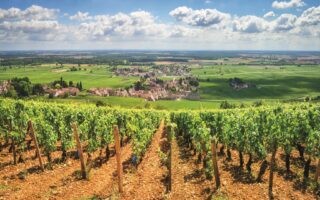French Property Location Guide: Perche
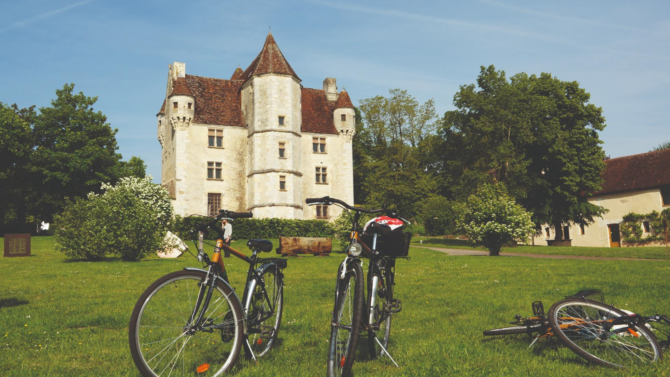
A paradise for lovers of authenticity – bucolic bocage, a patchwork of fields, raised hedges arching over sunken lanes: medieval châteaux, gardens and manor houses; a landscape of ancient forests, fish-filled rivers and gentle hilly countryside with quiet roads for great walking. Welcome to the ancient province of the Perche.
Today it is the 201,254- hectare Parc Naturel Régional (PNR) du Perche, with a population of 75,500 living in 91 communes. It is also home to the docile and robust Percheron dray horse (cheval de trait). The park protects its rich biodiversity and built heritage, and manages six Natura 2000 sites. Water is omnipresent – in the wetlands, rivers and streams, peat bogs and ponds.
ON THE MAP
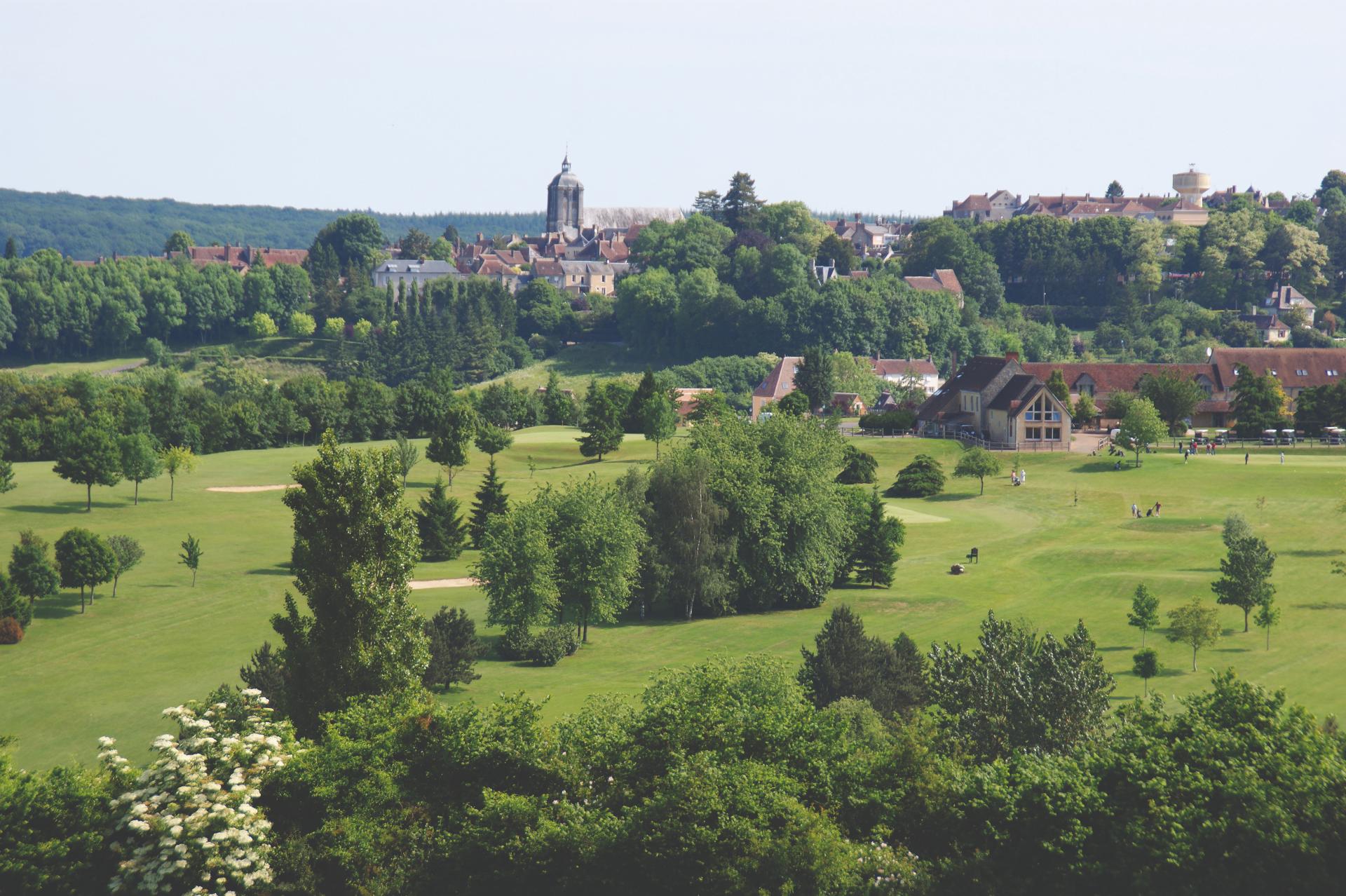
Bellême, a Petite Cité de Caractère in Orne, is surrounded by lush countryside, © ORNE TOURISME, DAVID DARRAULT
The PNR straddles Orne in Normandy and Eure-et-Loir in Centre-Val-de-Loire. You’ll find it on your map between Paris and the Normandy coast, so start checking out ferry crossings to Caen, Le Havre, Dieppe and Cherbourg. Or pack your panniers and pedal off on the 450km Mont-St-Michel to Paris Véloscénie cycle path, which swings by the Perche. It has some great property too – notably around Senonches and Perche capital Nogent-le- Rotrou in Eure-et-Loir, and the Petite Cité de Caractère, Bellême, in Orne.
“Senonches (population 3,000) has one main street and sits in a clearing,” says Laurence Legry of Perche Nord Immobilier. One of 15 communes making up the Communauté de Communes des Forêts du Perche, it’s an entry point into the Perche and is surrounded by a beautiful public forest (forêt domaniale).
“Along the main road, near the church, you will find 18th/19th-century terraced stone properties with flat terracotta roof tiles, as well as fine detached houses with gardens,” she continues.
The rust-brown stone used is the local pierre grison, soft enough when extracted but it dries quickly once in the air becoming extremely hard, difficult to carve and impermeable. Expect to pay around €120,000 for a small 80m² house requiring a little work and/or freshening up.
“In the surrounding countryside there are renovated farmsteads (corps de ferme), and longères, long low single-storey buildings, often with some land although it’s hard to find more than a hectare,” she says. Have a look at the prettily named nearby village of La Framboisière. There’s a renovated three- bedroom village house with a garage on the market here for €155,000 (Agence du Lion).
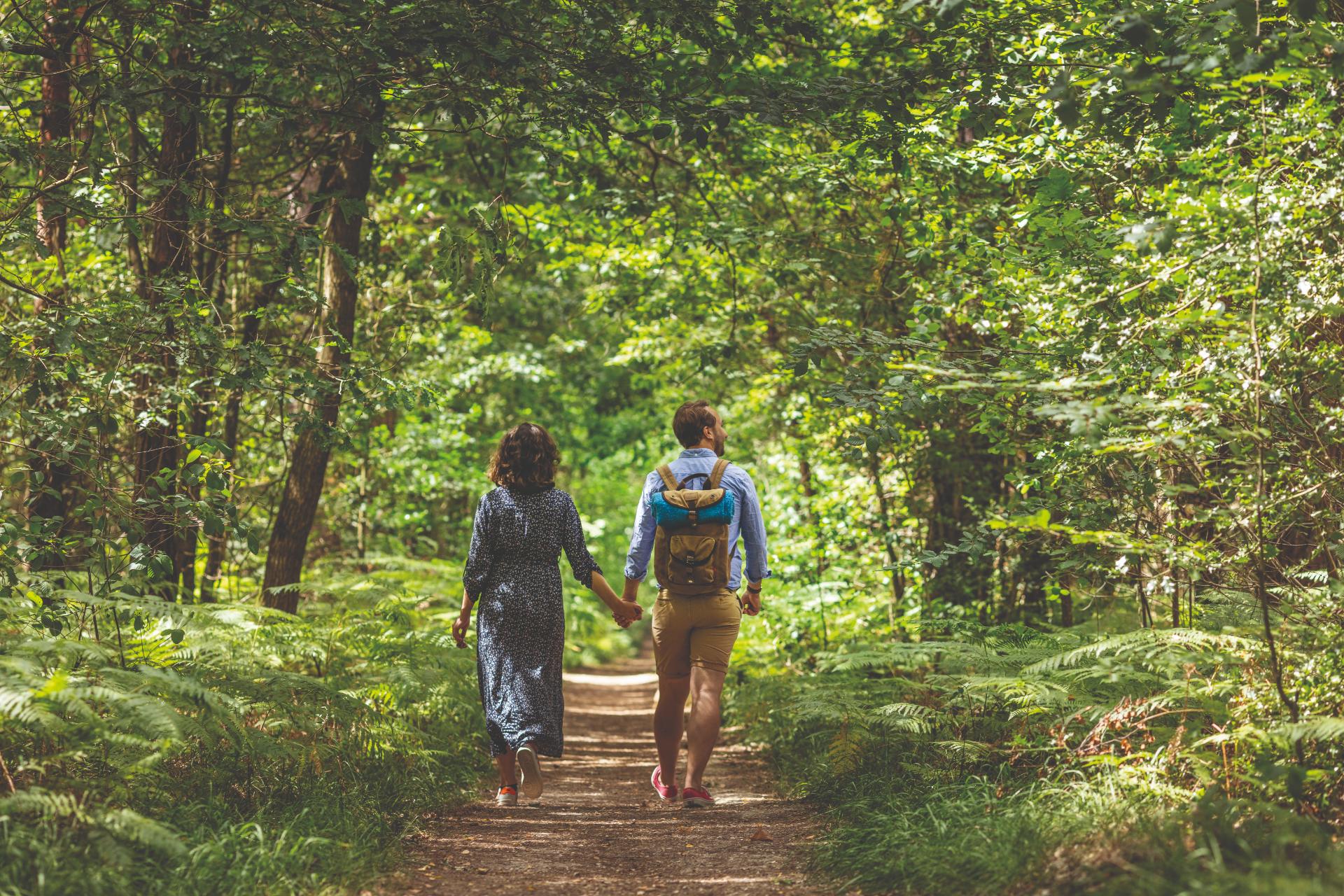
You can explore the trails that criss-cross the Perche on foot © ORNE TOURISME, DAVID DARRAULT
La Ferté-Vidame, to the northwest, has shops, ruins of an ancient château and its own forest. There’s a lovely main road here running in a straight line north to Verneuil-sur-Avre in Eure, with beautiful houses on either side. Two or three farmsteads nearby have been converted into riding centres.
West of Senonches, eight Orne communes now form just one – Longny-les-Villages. There’s an accommodation- based business opportunity at Longny-au-Perche, one of the eight and a Petite Cité de Caractère – a converted riverside mill, with nine rooms, 5.5 hectares, ideal for chambres d’hôte or gîtes (€602,000, Odile Gauvin at Sextant France).
For Laurence, the plus points of northern Perche are linked to nature. “The forest, fishing and horse riding are popular in this area.” She moved here from the southwest around 15 years ago and was surprised by the number of riders in the area. When we spoke, she had just had another enquiry from prospective buyers looking for a house with pasture for their horse. Land may be hard to come by, but water isn’t. “There are lots of étangs, while houses have mares.” Both words mean pools or ponds (jetez un pavé dans la mare means to make waves).
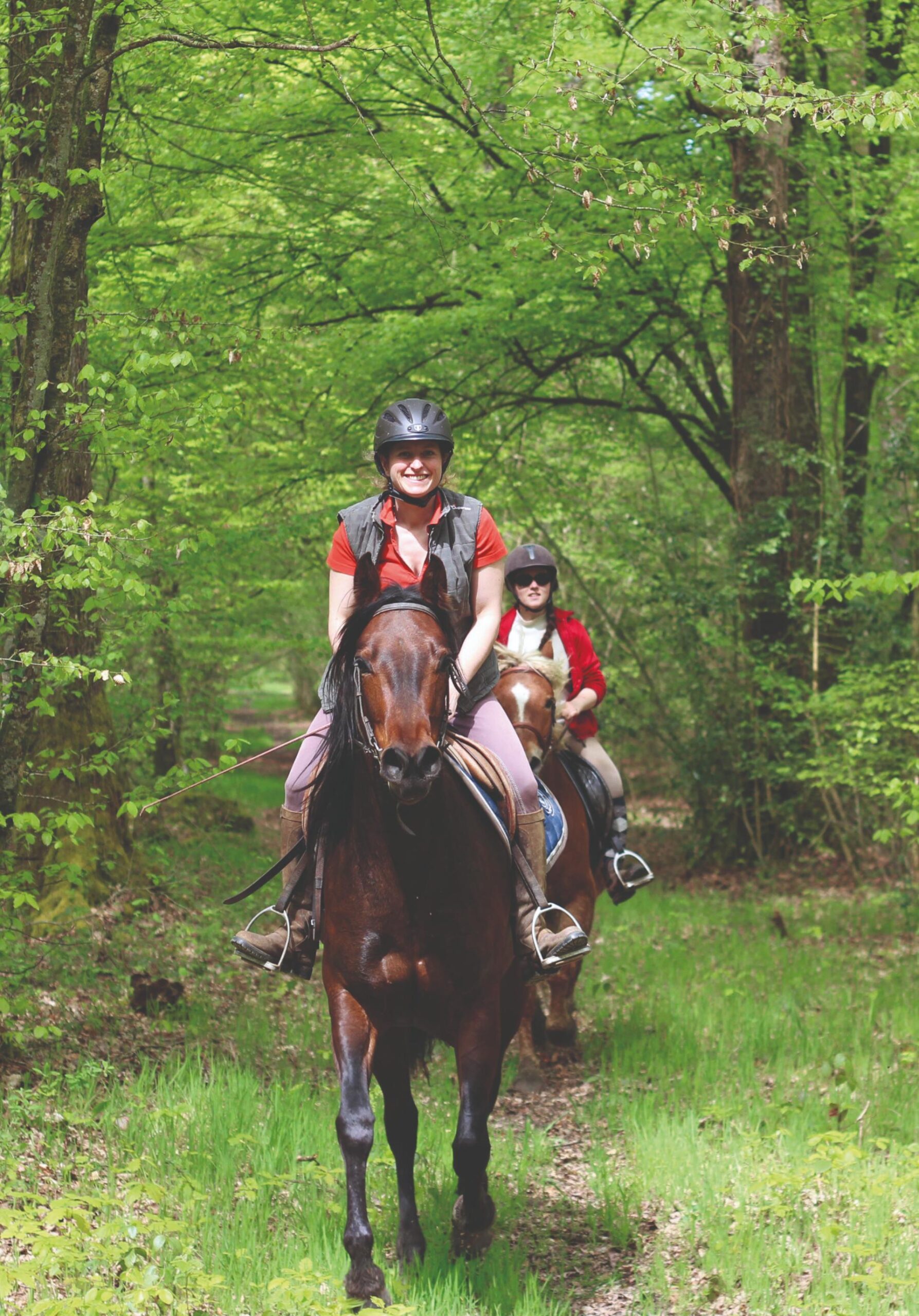
You can explore the trails that criss-cross the Perche on horse in the saddle, © ORNE TOURISME, DAVID DARRAULT
THE PARIS EFFECT
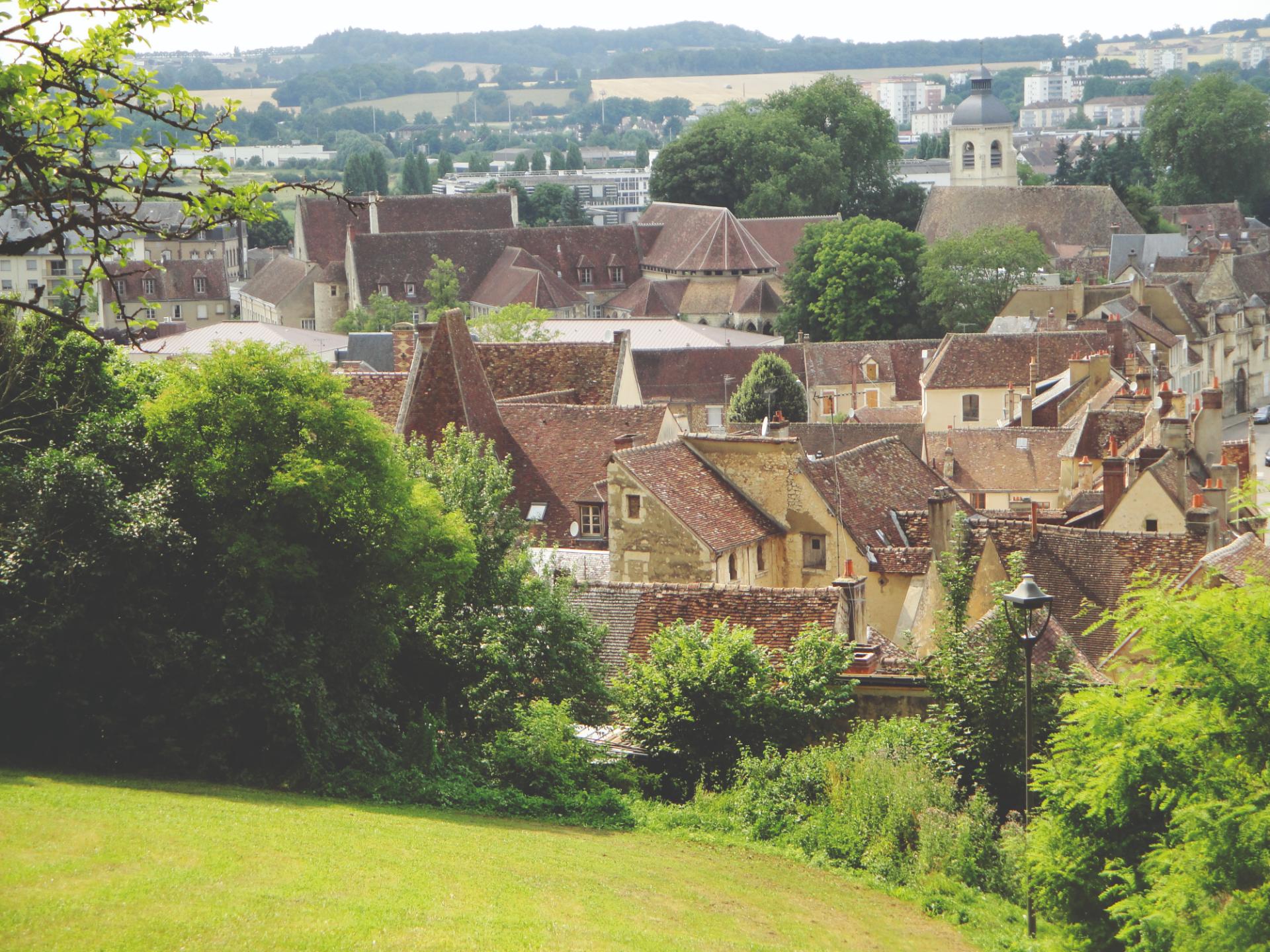
The houses in Senonches are built from the local limestone, © ORNE TOURISME, DAVID DARRAULT
In general, prices are about €1,500/m² in the Senonches area, “perhaps a bit less around Longny because you’re further from Paris. Senonches is just 11km from the railway station in La Loupe, so you can be in Paris within 90 minutes,” she says.
Although scarcer since Covid, you may still find old farm properties for renovation. For the investor, there’s a market for both long-term and seasonal lets. Senonches has a rich community, people are friendly. Laurence says she’s missed the fruit and vegetables, and the sun of the southwest but that’s been compensated by the forest. “I’ve discovered how to live in proximity to the forest – it’s a great asset.”
We head south now to the medieval sub-prefecture of Nogent-le-Rotrou, on the Orne border, close to Sarthe. It has a population of around 10,000, an 11th-century château, and the River Huisne runs through it. “In the historic centre, the Pâty quarter, terraced pale-limestone houses with local flat terracotta or slate tiles – often hôtels particuliers, private mansions – date back to the 16th and 17th centuries,” says Arnaud Traversa at Pâty Immobilier. Most remain intact not split into apartments – and any alterations are subject to approval by the state-run Bâtiments de France architect.
These hôtels particuliers often have enclosed grounds to the rear, referred to as parcs. Older houses have smaller plots, 500m²-800m³, alongside the property. If you’re partial to a hôtel particulier expect to pay €400,000-€600,000. “The majority of dwellings in the Pâty quarter have been renovated and are well maintained,” says Arnaud.
Leave the Pâty quarter and around the central square you’ll find 19th-century bourgeois properties selling for €300,000-€350,000. Some have been converted into apartments (e.g. town centre studio, €37,100, Office Notarial Actaperche) and there’s a good rental market.
“Since Covid and the discovery of homeworking, le télétravail, lots of folk live most of the week here in Nogent and travel the hour and a half by train to Paris for meetings,” explains Arnaud. “Buyers prefer properties small, terraced maisons de bourg – in the Orne countryside rather than Eure-et-Loir,”
he adds. “You find attractive architecture, houses with character, it’s well preserved.”
To the north, check out Verrières and Rémalard (e.g. four-bedroom 1880 village house, €99,860, BCV Immobilier). “We have lovely hills and fine walking paths, forests and very attractive houses,” says Arnaud. Here there are local shops, and you can buy your produce from markets or direct from the farm. You may find old farmsteads and longères for renovation. For a renovated one “with a hectare of land, a lovely view of the hills, without noise pollution or roads, the price is €250,000-€300,000”. Building land is harder to come by because we’re in a regional park, so new construction is quite limited. And if you want some land for your horses, you’ll need to buy the farm that goes with it. Nogent-le-Rotrou has a good number of associations from hiking to sport to culture to theatre. There’s unspoilt countryside of open fields and farmland, beautiful forests and fine secluded manors.
Our final stop is Bellême and its majestic forest to the northwest in Orne. We’re just two hours from Paris and there’s a “really sublime environmental quality”, says Yoann Biffard of Perch’Immo. “We have a 2,400-hectare forest below Bellême, it’s an undulating, verdant region, with magnificent views of the countryside around the town,” he continues. Bellême itself may be small, but it’s dynamic. Even on a Sunday morning many shops are open. You can find everything you need here so that’s a good selling point. Apart from the tiny historic centre, the two main shopping areas are around the church square and the Place de la Liberté.
The tiny historic centre offers a remarkable architectural patrimony – the Bellême Porch, the 17th-century St-Sauveur church rebuilt in classical style on 11th-century Romanesque foundations, and the splendid dwellings on Rue Ville Close and Rue d’Alençon.
Private hôtels particuliers often have attic rooms, known as chambres de bonne, from the days when owners had maids, and grounds, while small townhouses may have 100m²- 200m² of land – a courtyard or jardin de curé – at the rear. Yoann recently marketed a hôtel particulier with an 800m² garden near the old centre for around €600,000. He’s also selling a small townhouse requiring work for €80,000. You can still find properties for renovation, however, apartments are harder to come by. “Buildings are often bought and converted by investors for rental income, and thanks to Bellême’s tourist appeal, there is also a seasonal letting market,” says Yoann.
Throughout the countryside, you’ll find small old terraced houses. Villages around Bellême forest – St-Martin-du-Vieux-Bellême and on the far side, La Perrière, for example – are popular.
AUTHENTICITY SELLS
Worth a visit, too, is Chapelle- Montligeon with its late-19th- century Neo-Gothic basilica on the edge of the nearby “magnifique” Réno Valdieu forest. Its farmsteads and longères, which have retained their authenticity – often with tomettes (terracotta floor tiles), original beams and fireplaces – are much sought-after. You’ll pay €250,000-€300,000 for a renovated longère; Yoann is currently negotiating the sale of a small one for €129,000 that hasn’t yet been updated.
“Living in Bellême, it’s always a pleasure to ramble in the countryside and forest, gathering mushrooms in the autumn,” says Yoann. “Just to walk in nature is enough for a breath of fresh air.” And if you’ve got cash to splash, you can be lord of the manor or châtelain of a château (Mortagne-au-Perche, eight bedrooms, 9.5 hectares, €1,489,000, Barnes). There’s something in the Perche for every pocket and taste.
Looking for more like this?
Every issue of French Property News delivers in-depth regional buying guides, sound and trusted advice from leading experts, inspirational real life stories, renovation tales and lots of lovely properties to browse.
Lead photo credit : Medieval Manoir de Courboyer at Nicé, © ORNE TOURISME, DAVID DARRAULT
Share to: Facebook Twitter LinkedIn Email
More in Location guide, Perche
Leave a reply
Your email address will not be published. Required fields are marked *



